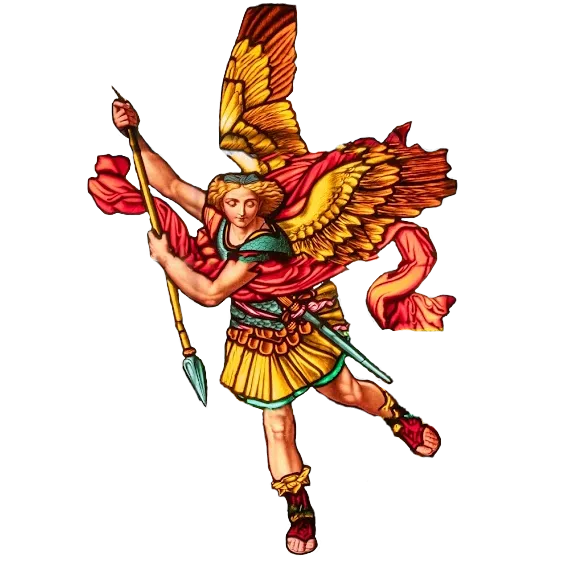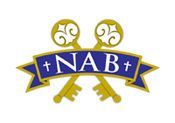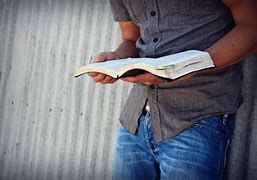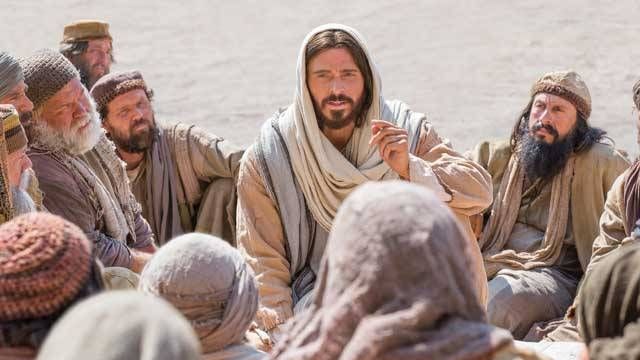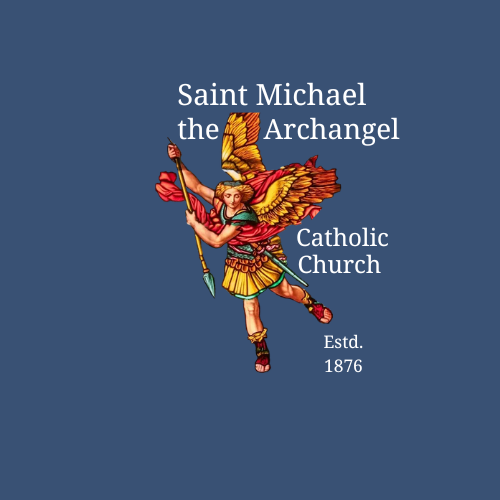Sacred Scripture
All scripture is inspired by God and is useful for teaching, for refutation, for correction, and for training in righteousness.
2 Timothy 3:16
The word of God is living and effective, sharper than any two-edge sword, penetrating even between soul and spirit, joints and marrow, and able to discern reflections and thoughts of the heart.
Hebrews 4:12
How do Catholics regard the Bible?
SACRED SCRIPTURE
Catholics hold the Bible to be inerrant Word of God. "The Church has always venerated the divine Scriptures as she venerates the body of the Lord." (Dei Verbum 21). The teaching authority of the Church interprets Sacred Scripture and Sacred Tradition to communicate the sacred truths to all generations; this is how Christ "opens our minds to understand the scriptures" (Luke 24:45).
This teaching office is not above the Word of God, but serves it, teaching only what has been handed on, listening to it devoutly, guarding it scrupulously and explaining it faithfully in accord with a divine commission and with the help of the Holy Spirit, it draws from this one deposit of faith everything which it presents for belief as divinely revealed.
(Dei Verbum 10)
Sacred Scripture tells the story of how God's plan of salvation has unfolded throughout history. "In the sacred books, the Father who is heaven meets his children with great love and speaks with them" (Dei Verbum 21). Salvation history, however, is different from other kinds of history. The Bible not only teaches the meaning of past events, but also reveals how those events affect every person's life in every age. (Cf. CCC 101-104)
The Bible is inspired and inerrant. God himself guided the Sacred Authors, who were enlightend by God the Holy Spirit to write what he wanted and nothing more, making it "not a written and mute word, but the Word which is incarnate and living" (Saint Bernard, S. Missus Est Hom.,4, 11: PL 183, 86). Thus, God the Holy Spirit is principal author of Scripture; the human writers were the instruments through which he chose to reveal himself to his people. (Cf. CCC 105-108)
The Bible is also literature because it uses literary forms and techniques, such as stories, poems, dialogues, and figurative language to convey its meaning. Insofar as these forms and historical, political, and cultural contexts in which they lived are not understood, the meaning of the Sacred Authors remains hidden. These literary techniques were placed at the service of the religious purpose of the Bible. (Cf. CCC 109-119)
Sacred Scripture is not intended to be received either as a scientific treatise or as a mere historical record "but, as it truly is, the word of God"(1Thessalonians 2:13; cf. DV24). It must be read in light of Sacred Tradition and the teachings of the Church in order to be properly understood. This is why Scripture and Tradition form a single Deposit of Faith, which, guided by the Magisterium, which in turn is guided by the Holy Spirit, preserves and communicates Divine Revelation for all time. Cf. CCC 84-87)
The Catechism of the Catholic Church, paragraphs 104 and 108 addresses this question.
-The Didache Bible
Until I arrive, attend to the reading, exhortation, and teaching.
1 Timothy 4:13
Where does the Bible come from?
All scripture is inspired by God and is useful for teaching, for refutation, for correction, and for training in righteousness.
2 Timothy 3:16
How were the books of the Bible compiled?
CANON OF SACRED SCRIPTURE
The teaching authority of the Church, through its reflection on Sacred Tradition, discerned and established which writings were inspired by God and therefore worthy of inclusion in the Old and New Testaments. "The Sacred Scriptures contain the word of God and since they are inspired, really are the word of God" (Dei Verbum 24).
The canon of Sacred Scripture is not found in the text of the Bible itself, of course, but is part of the deposit of revealed truths entrusted to and handed on by the Church. Under the guidance of the Holy Spirit, the Church developed a list, or canon, of those books that were determined to be divinely inspired. Through Sacred Tradition, the Church knows the canon of inspired books with certainty. (Cf. CCC 120)
By the time of the Incarnation, the forty-six books that make up today's Old Testament canon had already been written and appeared in the Septuagint (a Greek translation made by Jewish scholars in the third or second century BC). The Apostles and the early Christians used this version, even quoting it in the New Testament.
Late in the first century after the Resurrection of Christ, some Jewish rabbis in Palestine decided to exclude several books from their Scriptures because they were composed or preserved primarily in Greek or Aramaic rather than Hebrew. Christians had already been using and continued to use the full Septuagint, and they came to classify the books excluded by Palestinian Jews deuterocanonical ("of the second canon") while those they shared in common are called protocanonical ("of the first canon"). (Cf. CCC 121-123,128)
Besides the New Testament books we recognize today, there were numerous other "gospels" of the life of Christ, letters purportedly written by Apostles and other figures, and apocalyptic narratives in circulation. Some were of spurious origin, and others were tainted by false teachings or "revelations." Many originated with the Gnostics, a
heretical sect that claimed secret knowledge and visions in order to justify their beliefs. (Cf. CCC 120,126)
By the third century most theologians and Church leaders agreed on the essential composition of the canon. In Rome AD 382, Pope Damasus and the bishops established the canon of the Bible. The Pope then directed that the Bible be translated into Latin, the language of the people. This canon was subsequently endorsed by numerous local Christian councils and reaffirmed by the Ecumenical Council of Trent (1546) and the First Ecumenical Council of the Vatican (1870). (Cf. CCC 131-133)
The Catechism of the Catholic Church, paragraphs 120 and 135 addresses this question.
-The Didache Bible
Catholic editions of the Bible today include all forty-six Old Testament books and twenty-seven New Testament books (Cf. CCC 138)
Protestant reformers of the sixteenth century rejected the deuterocanonical books from their Scriptures. Most Protestant Bibles, however, continued to include the deuterocanonical books in a separate section until the twentieth century.
Organization of the Bible
Even though the Bible looks like a single book, it is really an anthology, a collection of individual books written at different times by different people. These books are organized into sections, and being familiar with these sections, makes it easier to find your way around in the Bible.
The Bible is divided into two main parts, the Old Testament and the New Testament.
Old Testament
The Old Testament is primarily the account of God's Chosen People, originally called Israelites and today called Jews. So most of the books of our Old Testament are also in the Jewish Scripture.
The Old Testament in Catholic Bibles has forty-six books, divided in the following sections:
The Penteuch (Greek for "five books"):
Genesis, Exodus, Leviticus, Numbers, and Deuteronomy.
These first five books are the core of the Old Testament. They tell about Creation, sin, and the origin of God's Chosen People from Creation to Moses.
The Historical Books:
Joshua, Judges, Ruth, the two Books of Samuel, the two Books of Kings, the two Books of Chronicles, Ezra, and Nehemiah, Tobit, Judith, Esther, and the two Books of Maccabees.
These books tell how the Israelites settled in the Promised Land. They also tell about the Israelites' great, and not so great, kings.
The Wisdom Books:
Job, Psalms, Proverbs, Ecclesiastes, Song of Songs, Wisdom, and Ben Sira.
These books are poetry and collected wisdom of the Israelites.
The Prophets:
Isaiah, Jeremiah, Lamentations, Baruch, Ezekiel, Daniel, Hosea, Joel, Amos, Obadiah, Jonah, Micah, Nahum, Habakkuk, Zephaniah, Haggai, Zechariah, and Malachi.
These books are the collected speeches and biographies of Israelite prophets. The prophets spoke for God against idolatry and injustice. They also spoke God's words of comfort and promise when the Israelites were suffering for their disobedience.
New Testament
The New Testament is about the life and teaching of Jesus Christ and the beginning of the Church.
The New Testament in Catholic Bibles has twenty-seven books divided into the following sections:
The Gospels:
Matthew, Mark, Luke and John. These four books are the most important books for Christians because they convey Jesus Christ's teachings and the meaning of his life, death, Resurrection and Ascension.
The Acts of the Apostles:
This book is a continuation of the Gospel of Luke (they were written by the same author as a two volume set) and tells about how the early Church spread.
The Epistles:
the Letters of Paul to the Romans, the First Letter to the Corinthians and the Second Letter to the Corinthians, the Letter to the Gallatians, the Letter to the Ephesians, the Letter to the Phillipians, the Letter to the Colossians, the First Letter to the Thessalonians and the Second Letter to the Thessalonians, the First Letter to Timothy and the Second Letter to Timothy, Letter to Titus, Letter to Philemon; the Letter to the Hebrews; the Letter of James, the First Letter of Peter and the Second Letter of Peter; the First Letter of John, the Second Letter of John, the Third Letter of John; the Letter of Jude.
These are twenty-one letters, written by Paul and other early Church leaders. They give teachings and guidance to individuals and the first Christian communities.
The Book of Revelation:
This book records the visions of an early Christian named John. The visions are about the battle between God and Satan and God's triumph over evil.
-The Catholic Faith Handbook, Volume Three



